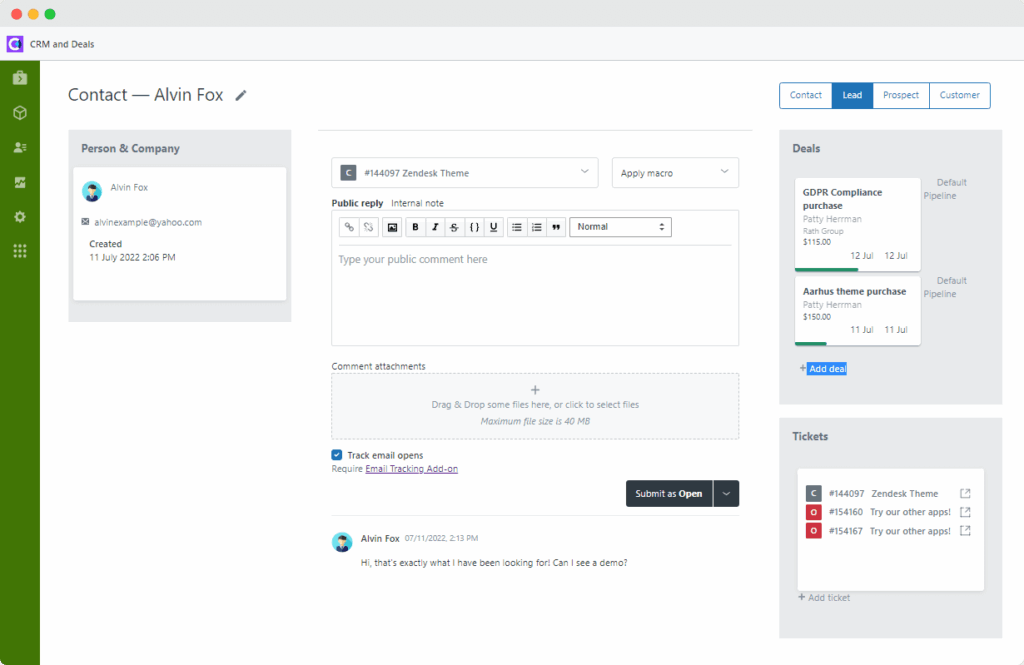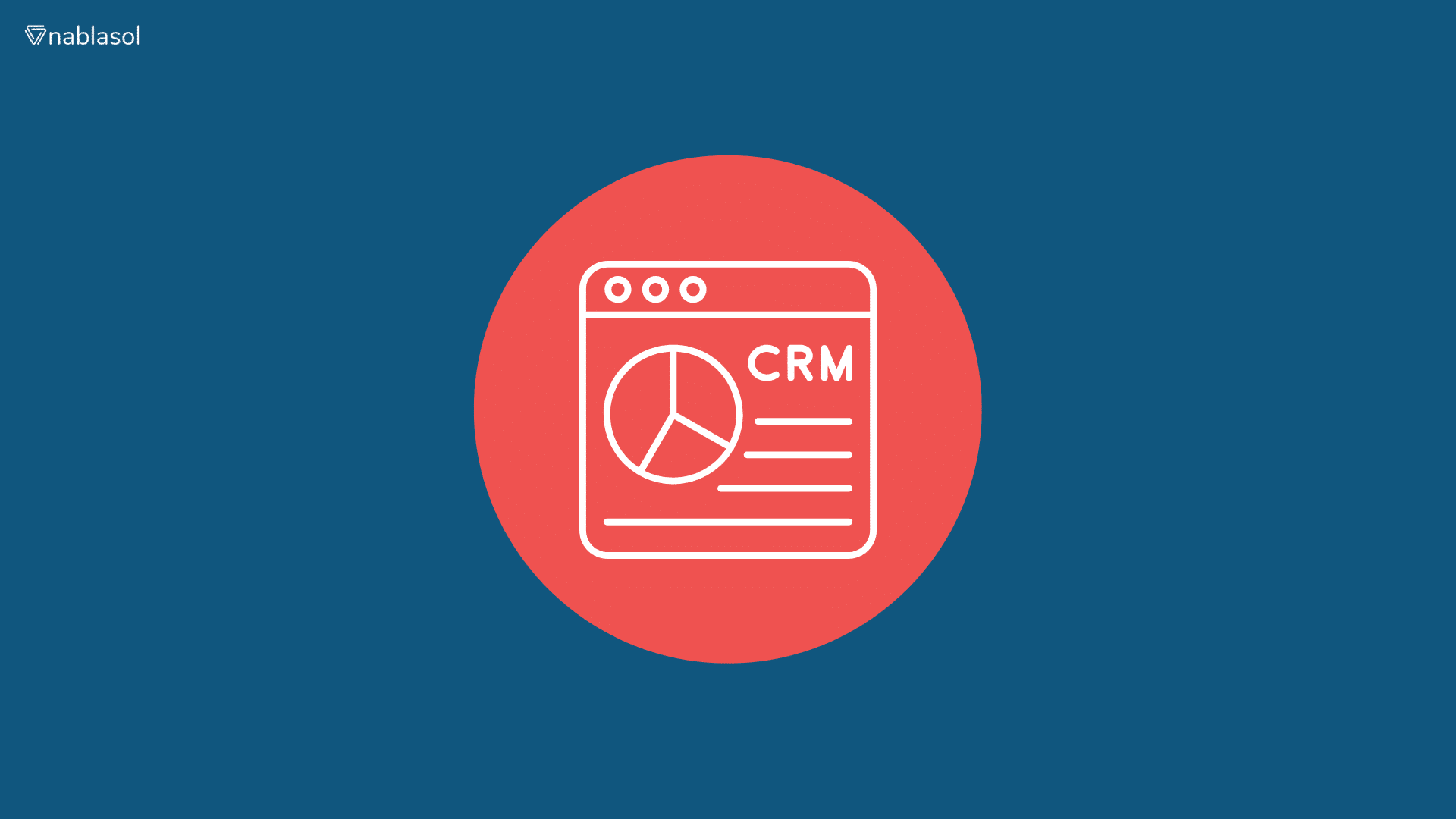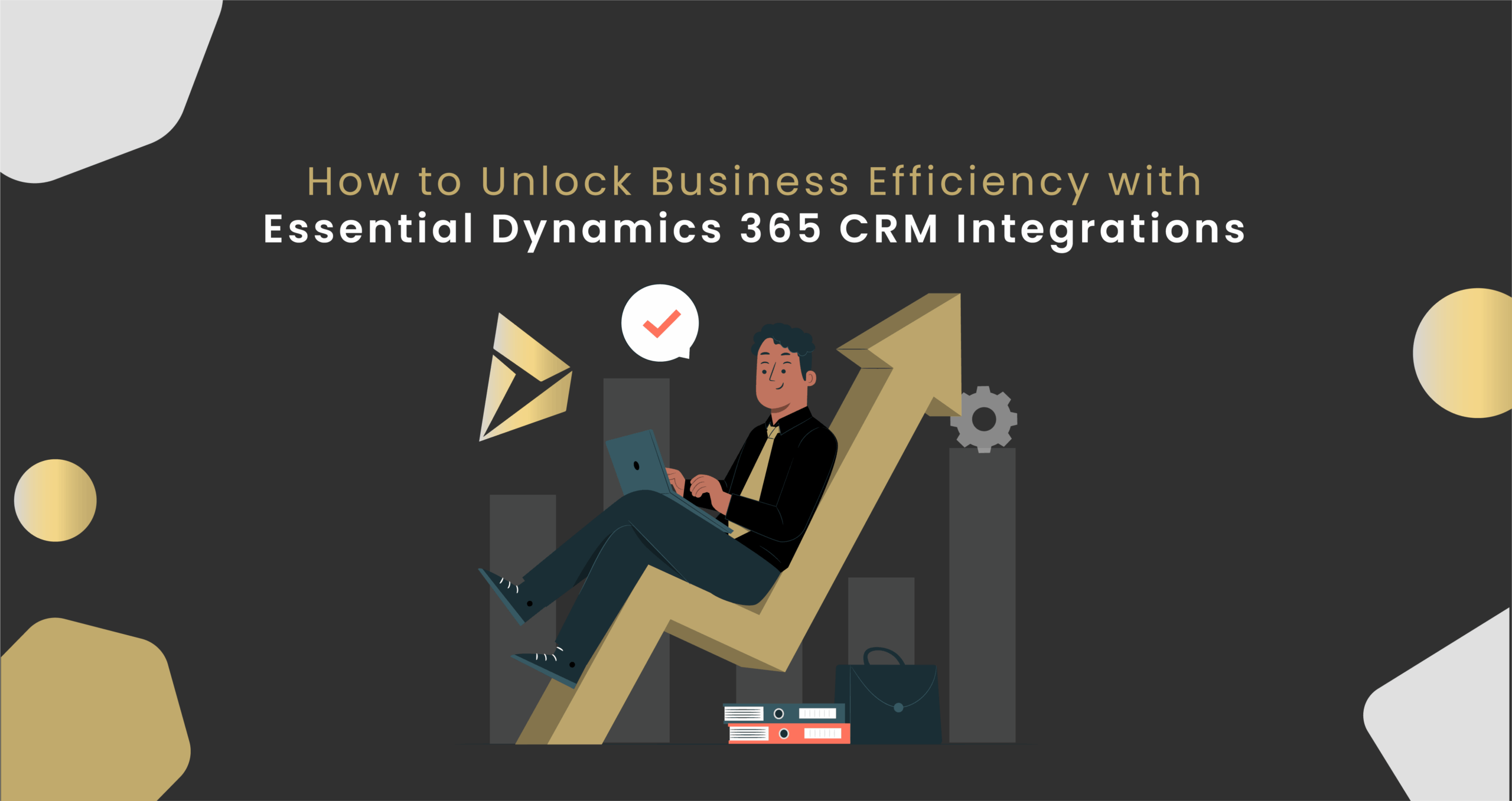
Introduction: The Power of Seamless Customer Service
In today’s fast-paced business environment, customer experience reigns supreme. Customers expect quick, personalized, and efficient service. They want their issues resolved swiftly and their needs anticipated. This is where the magic of seamlessly integrated systems comes into play. Imagine a world where your customer service agents have all the information they need at their fingertips, enabling them to provide exceptional support and build lasting relationships. This is the promise of CRM integration with Zendesk.
Zendesk, a leading customer service platform, and CRM (Customer Relationship Management) systems, which manage all your customer interactions and data, are two powerful tools. When these two are combined, they create a synergy that elevates your customer service to a whole new level. This article will delve deep into the benefits, implementation strategies, and best practices for integrating your CRM with Zendesk, empowering you to transform your customer service and drive business growth.
Understanding the Core Components: CRM and Zendesk
What is a CRM?
A Customer Relationship Management (CRM) system is more than just a database; it’s the central nervous system of your customer interactions. It stores and manages all customer-related information, including contact details, purchase history, support tickets, and communication logs. Think of it as the single source of truth for everything you need to know about your customers.
Key functionalities of a CRM include:
- Contact Management: Storing and organizing customer contact information.
- Sales Automation: Managing the sales pipeline, tracking leads, and automating sales processes.
- Marketing Automation: Creating and managing marketing campaigns, tracking leads, and segmenting customers.
- Reporting and Analytics: Providing insights into customer behavior, sales performance, and marketing effectiveness.
Popular CRM platforms include Salesforce, HubSpot, Microsoft Dynamics 365, and Zoho CRM, among others. The choice of CRM depends on your business size, industry, and specific requirements.
What is Zendesk?
Zendesk is a cloud-based customer service platform designed to help businesses manage and improve their customer support interactions. It provides a comprehensive suite of tools for managing support tickets, providing self-service options, and analyzing customer service performance.
Key features of Zendesk include:
- Ticketing System: Managing and tracking customer support requests.
- Live Chat: Providing real-time support through live chat.
- Help Center: Creating and managing a knowledge base for self-service support.
- Reporting and Analytics: Tracking key customer service metrics.
- Automation: Automating repetitive tasks and workflows.
Zendesk is widely used by businesses of all sizes, from startups to large enterprises, due to its user-friendly interface, robust features, and scalability.
The Synergy: Why Integrate CRM with Zendesk?
The integration of CRM with Zendesk is not just a technical upgrade; it’s a strategic move that can transform your customer service operations and significantly impact your bottom line. Here’s why it’s a game-changer:
360-Degree Customer View
One of the primary benefits is a comprehensive view of your customers. When Zendesk and your CRM are integrated, your support agents gain instant access to all relevant customer data, including past interactions, purchase history, and preferences. This allows them to provide personalized and informed support, leading to higher customer satisfaction.
Improved Agent Productivity
Integrated systems streamline workflows and eliminate the need for agents to switch between different applications. Agents can access customer information directly within Zendesk, reducing the time spent searching for data and enabling them to resolve issues faster. This boosts agent productivity and frees up their time to focus on more complex issues.
Enhanced Customer Satisfaction
Personalized support, faster resolution times, and a seamless customer experience all contribute to higher customer satisfaction. When agents have a complete understanding of the customer’s history and needs, they can provide more relevant and effective support. Happy customers are more likely to be loyal customers.
Data-Driven Decision Making
Integrated systems provide valuable insights into customer behavior and support performance. By analyzing data from both your CRM and Zendesk, you can identify trends, understand customer needs, and make data-driven decisions to improve your customer service strategy.
Increased Sales Opportunities
By integrating CRM with Zendesk, your support team can identify sales opportunities during support interactions. For instance, an agent can see a customer’s past purchases and suggest relevant products or services. This can lead to increased sales and revenue.
Key Benefits in Detail
Personalized Customer Support
Imagine a customer contacting support and the agent already knows their name, previous purchases, and past support interactions. That’s the power of personalization. Integration allows agents to tailor their responses to the customer’s specific needs, creating a more positive and memorable experience.
Faster Ticket Resolution
No more wasted time searching for customer information. Agents can quickly access all the necessary data within Zendesk, allowing them to diagnose and resolve issues faster. This reduces wait times and improves overall efficiency.
Reduced Agent Frustration
Switching between multiple applications is time-consuming and frustrating. Integration eliminates this need, allowing agents to focus on providing support instead of navigating different systems. This leads to increased job satisfaction and reduced employee turnover.
Improved Reporting and Analytics
Get a holistic view of your customer interactions and support performance. Integrated systems provide more comprehensive reporting and analytics, allowing you to track key metrics, identify trends, and make data-driven decisions to improve your customer service strategy.
Enhanced Sales and Marketing Alignment
When sales, marketing, and support teams are aligned, they can work together more effectively to provide a seamless customer experience. Integration enables better communication and collaboration between teams, leading to increased sales and customer loyalty.
Step-by-Step Guide to CRM Integration with Zendesk
Integrating your CRM with Zendesk can seem daunting, but with a well-defined plan, the process can be smooth and efficient. Here’s a step-by-step guide to help you get started:
1. Planning and Preparation
Before you dive into the technical aspects, take the time to plan your integration strategy. Consider the following:
- Define Your Goals: What do you want to achieve with the integration? Are you looking to improve customer satisfaction, increase agent productivity, or gain better insights into customer behavior?
- Identify Key Data Points: Determine which data points you want to synchronize between your CRM and Zendesk. This might include customer contact information, purchase history, support tickets, and communication logs.
- Choose an Integration Method: Decide how you want to integrate your CRM with Zendesk. You can use native integrations, third-party integrations, or custom API integrations.
- Assess Your Resources: Determine if you have the technical expertise and resources to implement the integration. If not, consider hiring a consultant or using a managed integration service.
2. Choosing the Right Integration Method
There are several ways to integrate your CRM with Zendesk, each with its own advantages and disadvantages:
- Native Integrations: Zendesk offers native integrations with some popular CRM platforms, such as Salesforce and HubSpot. These integrations are typically easy to set up and configure, and they provide a seamless user experience.
- Third-Party Integrations: Several third-party integration platforms, such as Zapier and Tray.io, offer pre-built integrations between Zendesk and a wide range of CRM systems. These integrations are often more flexible than native integrations and can be customized to meet your specific needs.
- Custom API Integrations: If you need a highly customized integration, you can use Zendesk’s API to build your own integration. This requires technical expertise but provides the most flexibility.
The best integration method for you will depend on your CRM platform, your technical skills, and your specific requirements.
3. Setting Up the Integration
Once you’ve chosen your integration method, it’s time to set up the integration. The specific steps will vary depending on the method you choose, but here are some general guidelines:
- Connect Your Accounts: Authenticate your Zendesk and CRM accounts.
- Configure Data Mapping: Map the data fields you want to synchronize between your CRM and Zendesk.
- Configure Triggers and Automation: Set up triggers and automation to streamline your workflows. For example, you can automatically create a new ticket in Zendesk when a new customer is created in your CRM.
- Test the Integration: Test the integration thoroughly to ensure that data is being synchronized correctly.
- Deploy the Integration: Once you’re satisfied with the testing, deploy the integration to your production environment.
4. Configuring Data Synchronization
Data synchronization is at the heart of a successful integration. Carefully consider what data you want to synchronize between your CRM and Zendesk. This will depend on your business needs, but some common data fields to synchronize include:
- Customer Contact Information: Name, email address, phone number, and address.
- Account Information: Company name, industry, and size.
- Purchase History: Past purchases, order dates, and order values.
- Support Tickets: Ticket status, priority, and assignee.
- Communication Logs: Email correspondence, chat transcripts, and phone call notes.
When configuring data synchronization, pay close attention to the direction of the synchronization (one-way or two-way) and the frequency of the synchronization (real-time or scheduled). Two-way synchronization can be particularly powerful, allowing changes made in either system to be reflected in the other.
5. Testing and Troubleshooting
Thorough testing is crucial to ensure the integration is working as expected. Test the integration in a staging environment before deploying it to your production environment. Create test cases to cover various scenarios, such as creating new customers, updating existing customer information, and resolving support tickets. If you encounter any issues, troubleshoot them by checking the integration logs, reviewing the data mapping configuration, and contacting the integration provider for support.
Best Practices for CRM Integration with Zendesk
To maximize the benefits of your CRM integration with Zendesk, follow these best practices:
1. Start Small and Iterate
Don’t try to integrate everything at once. Start with a pilot project, focusing on a specific set of data and a limited number of users. This will allow you to test the integration and identify any issues before rolling it out to the entire organization. Once you’ve successfully implemented the pilot project, you can gradually expand the integration to include more data and users.
2. Prioritize Data Accuracy
Ensure that the data being synchronized between your CRM and Zendesk is accurate and up-to-date. Implement data validation rules to prevent incorrect data from being entered into either system. Regularly review your data to identify and correct any errors.
3. Train Your Agents
Provide comprehensive training to your support agents on how to use the integrated system. Explain how to access customer information, how to navigate the different applications, and how to utilize the new features. This will help them to adopt the new system quickly and efficiently.
4. Monitor Performance
Regularly monitor the performance of your integrated system. Track key metrics, such as ticket resolution times, customer satisfaction scores, and agent productivity. Identify any areas where the integration can be improved and make adjustments as needed.
5. Maintain and Update the Integration
Keep your integration up-to-date by regularly reviewing the integration configuration, updating the software, and addressing any issues that arise. As your business evolves, your integration needs may change. Regularly review your integration to ensure it’s still meeting your needs.
6. Secure Your Data
Data security is paramount. Implement appropriate security measures to protect sensitive customer data. Use secure connections, encrypt data at rest and in transit, and regularly audit your security practices.
Examples of Successful CRM Integration with Zendesk
Many companies have successfully integrated their CRM systems with Zendesk, resulting in improved customer service, increased agent productivity, and enhanced business outcomes. Here are a few examples:
Example 1: E-commerce Company
An e-commerce company integrated its CRM with Zendesk to provide personalized support to its customers. Agents could access customer purchase history, shipping information, and past support interactions directly within Zendesk. This allowed agents to quickly resolve issues, offer relevant product recommendations, and proactively address customer concerns. As a result, the company saw a significant increase in customer satisfaction and a decrease in ticket resolution times.
Example 2: SaaS Company
A SaaS company integrated its CRM with Zendesk to track customer usage data and identify potential churn risks. Agents could see which customers were not using the product effectively and proactively reach out to offer assistance. This proactive approach helped the company reduce customer churn and increase customer lifetime value. The integration also allowed the sales team to identify upsell and cross-sell opportunities during support interactions.
Example 3: Financial Services Company
A financial services company integrated its CRM with Zendesk to improve its compliance and security. Agents could access customer information and support interactions within a secure and compliant environment. The integration streamlined workflows, reduced the risk of errors, and ensured that all customer data was handled in accordance with industry regulations. This resulted in improved customer trust and a stronger brand reputation.
Troubleshooting Common Integration Issues
Even with careful planning and execution, you may encounter some common integration issues. Here’s how to troubleshoot them:
Data Synchronization Issues
If data is not synchronizing correctly, check the following:
- Data Mapping: Verify that the data fields are mapped correctly between your CRM and Zendesk.
- Synchronization Frequency: Ensure that the synchronization frequency is appropriate for your needs.
- API Limits: Check for any API limits that may be preventing data synchronization.
- Error Logs: Review the integration error logs for any clues about the problem.
Performance Issues
If the integration is slowing down your systems, consider the following:
- Data Volume: Reduce the amount of data being synchronized.
- Synchronization Frequency: Adjust the synchronization frequency to reduce the load on your systems.
- API Calls: Optimize the number of API calls being made.
Security Issues
If you have security concerns, consider the following:
- Data Encryption: Ensure that data is encrypted at rest and in transit.
- Access Controls: Implement appropriate access controls to restrict access to sensitive data.
- Regular Audits: Conduct regular security audits to identify and address any vulnerabilities.
The Future of CRM and Zendesk Integration
The integration of CRM and Zendesk is constantly evolving, with new technologies and features emerging all the time. Here are some trends to watch:
Artificial Intelligence (AI) and Machine Learning (ML)
AI and ML are being used to automate customer service tasks, such as ticket routing and chatbot interactions. They are also being used to provide agents with real-time insights and recommendations, enabling them to provide more effective support. Expect to see even more AI-powered features in integrated CRM and Zendesk systems in the future.
Enhanced Personalization
Businesses are increasingly focused on providing personalized customer experiences. Integrated systems will play an even greater role in enabling this, by providing agents with access to more detailed customer data and allowing them to tailor their responses to the customer’s specific needs.
Omnichannel Support
Customers are interacting with businesses through a variety of channels, including email, chat, phone, and social media. Integrated systems will provide a unified view of all customer interactions, regardless of the channel, allowing agents to provide a consistent and seamless customer experience.
Increased Automation
Automation will continue to play a major role in customer service. Integrated systems will automate more tasks, such as ticket creation, data entry, and follow-up emails, freeing up agents to focus on more complex issues.
Conclusion: Elevate Your Customer Service with CRM and Zendesk Integration
Integrating your CRM with Zendesk is a strategic investment that can significantly improve your customer service operations. By providing your agents with a complete view of the customer, streamlining workflows, and enabling data-driven decision-making, you can create a more positive customer experience, increase agent productivity, and drive business growth. By following the best practices outlined in this article, you can successfully implement your integration and reap the rewards of a truly customer-centric approach.
Embrace the power of seamless integration, and transform your customer service into a competitive advantage. The future of customer service is here, and it’s waiting for you to take the leap.

